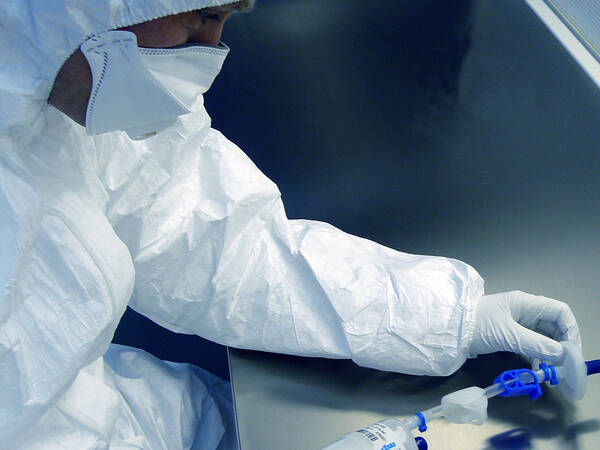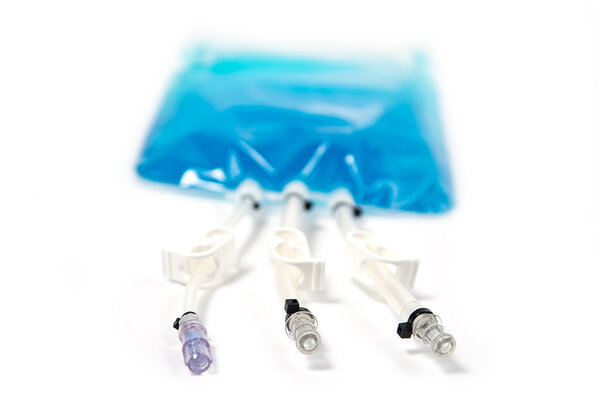

As a pharmaceutical company, what do you need to know about validation when using single-use systems?
The deployment of single-use production systems is changing the way pharmaceutical companies look at their validation process. This is because the complex supply chain for the various components in single-use systems is not always streamlined. Both the suppliers and the end users of single-use systems are facing validation challenges that are different to what we are accustomed to when using comparable stainless steel production systems. Add to that the stricter procedures followed by pharmaceutical companies to reduce the risks related to the development and production of medicines. As a (bio)pharmaceutical company, how can you deal with all of these factors? In my opinion, the answer is: By sharing the validation responsibility with the other links in the supply chain.
Why must validation be a shared responsibility?
Pharmaceutical companies face many challenges when it comes to the safe and efficient production of medicines. They need to reduce their costs in a very regulated market and deal with the many different parties involved in creating a production line.
The tendency to turn away from stainless steel production systems is leading to greater numbers of different suppliers and more critical points in the process where things can go wrong. Let’s start on component level. Manufacturers of single-use components don’t all use the same raw materials. Some of those raw materials are in themselves individual components with their own supply chains.
And then you have the companies that supply single-use assemblies. Sometimes they don’t just assemble the systems – they also produce some of the components used in the assemblies. That is why these so-called system integrators also have their own supply chains for raw materials so that they can manage and validate them before they assemble and supply the definitive single-use system.
The validation of production systems was always the primary responsibility of the medicine manufacturer. That model is now changing due to the use of single-use production systems. Validation must now start on raw material level and then be performed for all production, operational and supply steps up to the ultimate assembly of the single-use system. Pharmaceutical manufacturers understand how they must validate in
What do you need to take into account when validating components?
The basic building blocks of a single-use assembly are the individual components. Frequently-used single-use components include connectors, filters, tubing, clamps, connection ports and bags. The validation process to ultimately arrive at a completely validated single-use assembly starts with these individual components. That is why pharmaceutical companies and the companies that build the single-use components and assemblies into single-use process systems must work closely together to create methodical quality controls and reliable
Current challenges
In my opinion, the lack of a standard approach for validating single-use systems is one of the greatest challenges facing the (bio)pharmaceutical sector and the manufacturers and suppliers of single-use technology. In practice, I can see the following issues at pharmaceutical companies:
- The lack of a reproducible production process
- The inability to measure quality and accuracy
- Inefficiency caused by a lack of training in how to use the different single-use components
- Inconsistency between different production locations
- Restrictions in flexibility during implementation due to limited interoperability. Owing to the lack of standardisation, not all single-use components can be combined.
Uniform procedures
A number of industrial groups, such as the BPSA (Bio-Process Systems Alliance), BPE (Process Engineering Consultants) and BPOG (BioPhorum Operations Group) have proposed setting up uniform procedures and methods, but the main challenges still exist. Take the plastic films that are used for the production of single-use bags. They are currently regulated under USP <661>. This is the standard for packaging. A proposed new standard (USP <665>) specifically for polymer components and systems deployed in pharmaceutical and biopharmaceutical processes is now being looked into. But at the moment there is unfortunately no industrial standard. Whatever the case, as specific standards for single-use technology are developed further, the manufacturers of single-use components will become more and more aligned with each other.
Now there are still many differences between the suppliers of single-use technology. Some companies focus on the needs of the biopharmaceutical industry, while others take the single-use supply chain of industries as their starting point where different requirements apply for quality control, documentation, validation and purity. Suppliers that did not originally supply the pharmaceutical sector often have less in-house bioprocessing expertise. This sometimes leads to misunderstandings about the requirements to be met by the system integrator, medicine manufacturer and regulatory authorities. Many suppliers are graduating towards cleaner production and assembly processes, including production in cleanrooms, the merging (moulding) of components under clean conditions and clean extrusion capabilities for injection moulding.
Understanding the needs of end users
Component suppliers can be many production steps removed from the pharmacist, who as the single-use end user is of course the hands-on expert. If there is no direct communication with the process operators, it is difficult to map out their requirements. In addition, suppliers of components must be aware of the needs not only of end users but also of the companies that are building assemblies with the single-use components. At Hitma, the assembly facility with the cleanroom is at the same location as the purchase and sales teams. This ensures short communication lines between our specialists and the end user, but also between the manufacturers of the single-use components and the specialist who is building the single-use assemblies for the customer in the cleanroom.
Based on our central role, for our pharmaceutical customers we arrange batch records, quality documents, the traceability of the batch and processes connected to the return of single-use products. We also help our assembly department comply with the production and chain management specifications.
In short, by sharing the validation responsibilities with each other across the entire supply chain, manufacturers, distributors, assembly partners and the pharmaceutical industry can create a 100% validated single-use production process.
